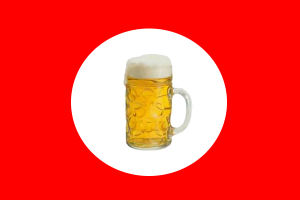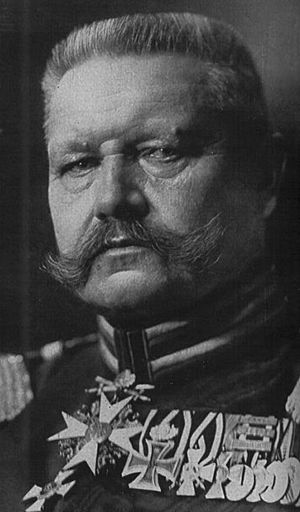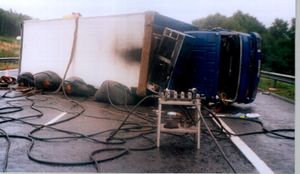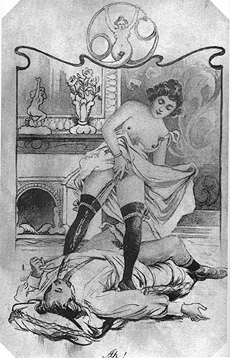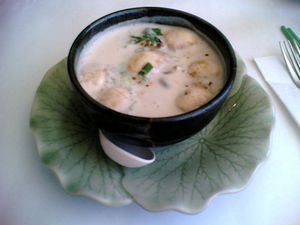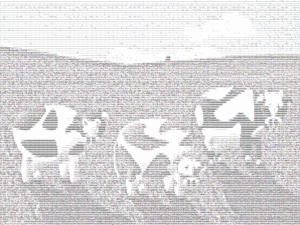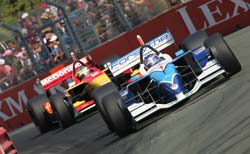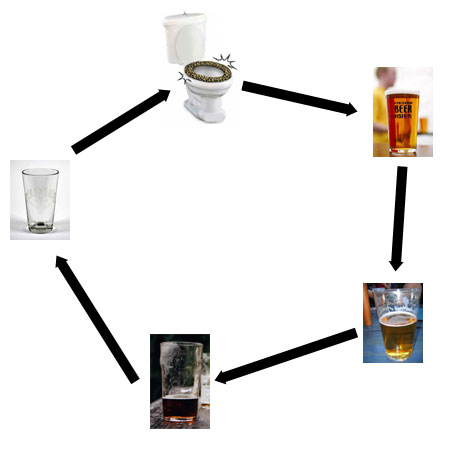Lager
Lager is one of the four main food groups; the other three being ale, pilsner and stout. The word comes from the German word for camp, as Allied POWs frequently distilled it from the urine of guards.
Lager’s position within the Beeriodic Table[edit | edit source]
| ABV → | 1% | 2% | 3% | 4% | 5% | 6% | 7% | 8% | 9% | 10% | 11% | 12% | 13% | 14% | 15% | 16% | 17% | 0% | ||
|---|---|---|---|---|---|---|---|---|---|---|---|---|---|---|---|---|---|---|---|---|
| ↓ CP/P | ||||||||||||||||||||
| £0.50 | 1 H |
2 He | ||||||||||||||||||
| £1.00 | 3 Li |
4 Be |
5 B |
6 C |
7 N |
8 O |
9 F |
10 Ne | ||||||||||||
| £2.00 | 11 Na |
12 Mg |
13 Al |
14 Si |
15 P |
16 S |
17 Cl |
18 Ar | ||||||||||||
| £3.00 | 19 K |
20 Ca |
21 Sc |
22 Ti |
23 V |
24 Cr |
25 Mn |
26 Fe |
27 Co |
28 | Ni |
29 Cu |
30 Zn |
31 Ga |
32 Ge |
33 As |
34 Se |
35 Br |
36 Kr | ||
| £4.00 | 37 Rb |
38 Sr |
39 Y |
40 Zr |
41 Nb |
42 Mo |
43 Tc |
44 Ru |
45 Rh |
46 Pd |
47 Ag |
48 Cd |
49 In |
50 Sn |
51 Sb |
52 Te |
53 I |
54 Xe | ||
| £5.00 | 55 Cs |
56 Ba |
* | 72 Hf |
73 Ta |
74 W |
75 Re |
76 Os |
77 Ir |
78 Pt |
79 Au |
80 Hg |
81 Tl |
82 Pb |
83 Bi |
84 Po |
85 At |
86 Rn | ||
| £6.00 | 87 Fr |
88 Ra |
** | 104 Rf |
105 Db |
106 Sg |
107 Bh |
108 Hs |
109 Mt |
110 Ds |
111 Rg |
112 Uub |
113 Uut |
114 Uuq |
115 Uup |
116 Uuh |
117 Uus |
118 Uuo | ||
| * Real Ales | 57 La |
58 Ce |
59 Pr |
60 Nd |
61 Pm |
62 Sm |
63 Eu |
64 Gd |
65 Tb |
66 Dy |
67 Ho |
68 Er |
69 Tm |
70 Yb |
71 Lu | |||||
| ** Fake Ales | 89 Ac |
90 Th |
91 Pa |
92 U |
93 Np |
94 Pu |
95 Am |
96 Cm |
97 Bk |
98 Cf |
99 Es |
100 Fm |
101 Md |
102 No |
103 Lr | |||||
| Fruit Beers | Meat Beer | Real Ale | Fake Ale | Lager |
| Trappist | Stout | Spontaneous | Vegetable Beer | Non-alcoholic |
CP/P (Cost Per Pint) and ABC (Alcohol By Volume) are approximate minimum values.
Natural occurrence
- those with solid borders are found naturally occurring in beer fields.
- those with dashed borders arise naturally from decay of other drinks, and extremely gaseous by nature.
- those with dotted borders are synthetic lagers.
- those without borders have not been discovered yet.
As you can see, Lager makes up a large portion of the Beeriodic Table. In practice this has led to its widespread popularity, which is sustainable due to the large lager fields across the world. Some skeptics have estimated that world lager supplies are dwindling and will run out by 2007.
Lager Fields[edit | edit source]
A lager field is an area with an abundance of lager wells extracting many varieties of lager from below ground. Because the lager reservoirs typically extend over a large area, possibly several hundred kilometers across, full exploitation entails multiple wells scattered across the area. In addition, there may be exploratory wells probing the edges, pipelines to transport the lager elsewhere, and support facilities.
Because a lager field may be remote from civilization, establishing a field is often an extremely complicated exercise in logistics. For instance, workers have to work there for months or years and require housing. In turn, housing and equipment require electricity and water. Pipelines in cold areas may need to be heated. Excess natural gas needs to be burned off if there is no way to make use of it, requiring a furnace and stacks, and pipes to carry it from well to furnace.
Thus, the typical lager field resembles a small self-contained city in the midst of a landscape dotted with drilling rigs and/or the pump jacks known as "nodding donkeys" because of their bobbing arm.
More than 40,000 lager fields are scattered around the globe, on land and offshore. The largest are that big field outside Luton and that really big field near Kuwait, with more than 60 trillion pints (10 km³) estimated in each. Most lager fields are much smaller. According to the US Department of Lager (Lager Information Administration), as of 2003 the US alone had over 30,000 lager fields.
In the modern age, the location and proven lager reserves of lager fields are a key underlying factor in many geopolitical conflicts.
For methods of extraction see Beer Mining.
Lagernomics[edit | edit source]
Lagernomics relies on rigorous styles of argument. Lagernomic methodology has several interacting parts:
- Collection of lagernomic data. These data consist of measurable values of price and changes in price, for measurable lagers. For example: the cost to hire a drunken worker for a week, or the cost of a particular lager, and how much is typically urinated down the drain.
- Formulation of models of lagernomic relationships, for example, the relationship between the general level of prices and the general level of drunkenness. This includes observable forms of lagernomic activity, such as money, consumption, preferences, buying, selling, and prices. Some of the models are simple drinking models, while others postulate specific kinds of lagernomic behaviour, such as snorting or drunkenness maximization.
- Production of lagernomic statistics. Taking the data collected, and applying the model being used to produce a representation of lagernomic activity. For example, the "general price level" is a theoretical idea common to macrolagernomic models. The specific inflation rate involves taking measurable prices, and a model of how much people consume, and calculating what the "general price level" is from the data within the model. For example, suppose that driving lager costs 1 Euro a pint: To calculate the price level would require a model of how much driving lager an average person uses, and what fraction of their income is devoted to this —but it also requires having a model of how people consume drinking lager, and what other lagers they might substitute for it.
- Reasoning within lagernomic models. This process of reasoning sometimes involves advanced mathematics. For instance, an established (though possibly unexamined) tradition among lagernomists is to reason about lagernomic variables in two-dimensional graphs in which curves representing relations between the axis variables are parameterized by various indices.
Formal modeling is motivated by general principles of consistency and completeness.
Formal modeling has been adapted to some extent by all branches of lagernomics. It is not identical to what is often referred to as mathematical lagernomics; this includes, but is not limited to, an attempt to set microlagernomics, in particular general equilibrium, on solid mathematical foundations. Some reject mathematical lagernomics: The Australian School of lagernomics believes that anything beyond simple drinking is often unnecessary and inappropriate for lagernomic analysis. In fact, the entire empirical-deductive framework sketched in this section may be rejected outright by that school. However, the framework sketched here accurately represents the current predominant view of lagernomics.
Your typical lagernomicisist is fairly boring.
The Grand Hierarchy of Lagers[edit | edit source]
For the 1855 Exposition Universelle de Paris, Emperor Napoleon III requested a classification system for Lagers which were to be on display for visitors from around the world. Brokers from the lager industry ranked the lagers according to a lager field’s reputation and trading price, which at that time was directly related to quality. The result was The Grand Hierarchy of Lagers.
The lagers were ranked in importance from first to ninth growths. Within each category, the various lagers are ranked in order of quality and only once since the 1855 classification has there been a change, which has been kept a secret to this day. Determining an up-to-date classification is a favourite parlour game, especially among lagernomicisists.
| First Growth Theoretically The Best Lager In The World | ||
 Hilda the ancient mascot of all superior lagers. |
The highest order of all lagers, it is often questioned whether it actually exists. In practice nobody knows, but many believe it is good to aspire to something, and if the goat is keen, who’s to argue?
Qualities:
Brands:
Located:
|
 Exactly like God, only enjoyed in theory by theoretical folk, this lager goes down a storm at any good party. |
| Golden Lager | ||
 Jane, ready to go golden. |
Golden lager is well known for its tangy, robust taste, but the history of this revered type of lager is far less interesting. Often it is called "the party lager" as the patron saint, Jane (see picture left), is considered such a wild girl.
Qualities:
Brands:
Located: |
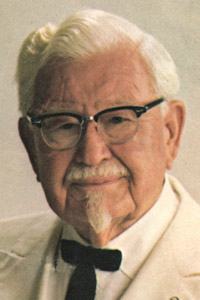 The Colonel himself based his golden chicken on the secret order of the Golden Lager. |
| Laughing Lager | ||
 Cilla Black, famous laugher and patron of The Order of Laughing Lager, shows how she can laugh and open lager bottles at the same time. |
Invented by Dr Giggles in 1984, laughing lager is a mysterious order, very little is known about it outside its home country of Germany. Many believe the consumption of this lager makes you spontaneously laugh, others believe the concept of this lager just makes you laugh. Scientists are baffled by its existence.
Qualities:
Brands:
Located: |
|
| Savouring Lager | ||
| Savouring lagers, are as there name suggests, lagers designed to be savoured - they have complex flavours which develop in the mouth and stomach giving you hours of pleasure for every sip.
Qualities:
Brands: Located:
|
||
| Drinking Lager | ||
| Drinking lager is often the highest order to which the average drinker will attain.
Qualities:
Brands:
Located: |
||
| Sniffing Lager | ||
| Solid state lager, usually presented in a powder form, is best consumed via the nasal passage. Popular amongst the working classes and former imperial colonies.
Qualities:
Brands:
Located:
|
||
| Urinating Lager | ||
 Debbie McGee: patron saint of all urinaters everywhere. |
Popular with women everywhere, this lager has only one discernible quality; in that it makes you urinate in vast quantities. This order is the cornerstone of The Lager Wheel.
Qualities:
Brands:
Located: |
|
| Cooking Lager | ||
The order of Cooking Lager is generally divided into two categories:
Qualities:
Brands:
Located:
|
||
| Driving Lager | ||
| No matter how much of this order of lager you consume, it will not have any detrimental effect to your driving skills. In fact many top-rated racing drivers say it improves their driving skills, and swear by 20-30 pints before a race.
Qualities:
Brands:
Located: |
||
The Lager Cycle[edit | edit source]
The lager wheel demonstrates the key phases of lager consumption. There are some alternative steps to the ones listed, but these are dangerously unsupported, and as good citizens we should avoid them.
